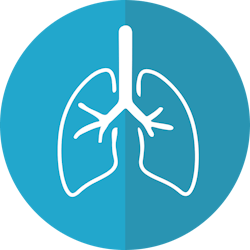The U.S. Food and Drug Administration (FDA) approved Tabrecta (capmatinib) for the treatment of adult patients with non-small cell lung cancer (NSCLC) that has spread to other parts of the body, the agency said in a press release.
Tabrecta, which is taken orally, is the first FDA-approved therapy to treat NSCLC with specific mutation, or those that lead to mesenchymal-epithelial transition or MET exon 14 skipping.
The FDA also approved the FoundationOne CDx assay (F1CDx) as a companion diagnostic for Tabrecta. Most patients had tumor samples that were tested for mutations that lead to MET exon 14 skipping using local tests and confirmed with the F1CDx, which is a next-generation sequencing based in vitro diagnostic device that is capable of detecting several mutations, including mutations that lead to MET exon 14 skipping.
NSCLC is a disease in which malignant cancer cells form in the tissues of the lung. It is the most common type of lung cancer, and up to 90 percent of all lung carcinomas fall into the non-small cell category, the FDA said. One danger of this form of cancer is that there is a high likelihood that the cancer cells will spread from the lungs to other organs and body parts.
Cancer metastasis consists of a sequential series of events; and MET exon 14 skipping is recognized as a critical event for metastasis of carcinomas. Mutations leading to MET exon 14 skipping are found in 3-4 percent of patients with lung cancer.
Tabrecta, developed by Novartis Pharmaceuticals, is a kinase inhibitor, meaning it functions by blocking a key enzyme that results in helping to stop the tumor cells from growing.
The FDA said it approved Tabrecta based on the results of a clinical trial involving patients with NSCLC with mutations that lead to MET exon 14 skipping, epidermal growth factor receptor (EGFR) wild-type and anaplastic lymphoma kinase (ALK) negative status, and at least one measurable lesion.
Among clinical trial participants, 28 patients had never undergone treatment for NSCLC and 69 had been treated previously. Of the patients who had never undergone treatment, 68 percent saw a prespecified amount of tumor shrinkage, with 4 percent having a complete response and 64 percent having a partial response. In nearly half of them, or 47 percent, the duration of response lasted for 12 months or longer.
Of the patients who had previously been treated for NSCLC, 41 percent saw a prespecified amount of tumor shrinkage, and 32 percent had a duration of response lasting 12 months or longer.
Common side effects for patients taking Tabrecta are peripheral edema (leg swelling), nausea, fatigue, vomiting, dyspnea (shortness of breath) and decreased appetite.
Serious side effects include interstitial lung disease (a group of lung conditions that causes scarring of lung tissues) or pneumonitis (inflammation of the lung tissue). Tabrecta may also cause hepatotoxicity (damage to liver cells), and health care professionals should monitor a patient’s liver function tests prior to starting and when taking Tabrecta.
Tabrecta was approved under the Accelerated Approval pathway, which provides for the approval of drugs that treat serious or life-threatening diseases and generally provide a meaningful advantage over existing treatments.

